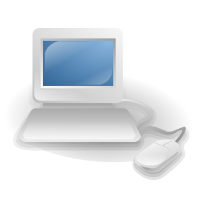Learning is Active

|
 Traditional and Technology Based Assessments[edit | edit source]Any of the following assessments may be used at the end or during a unit of study based on a scientific process such as photosynthesis, infection of a cell by a virus, mitosis, etc. |
 Lesson Plan[edit | edit source]Non-Technology Based Assessments[edit | edit source]
Storyboard: Poster-like task where students create picture frames to exhibit the scientific process with descriptive captions included.
Technology-Based Assessments[edit | edit source]Various website and technology based resources.
Aniboom Animation on DNA Translation [6] Aniboom Animation on Genetic Modification [7]]
You Tube Video of Student Created Movie using digital photography, photo editing with Picasa[8] and Windows Movie Maker Biology Content: Comparative Anatomy of Human and Sheep Brain using internet images of human brain and comparing them to in-class dissection images of sheep brain. You Tube Link [9]
Student Example of Technology Based Assessment: Click on link for PDF version of student
|
 References[edit | edit source]Dewey, J. (1902). The child and the curriculum. Chicago, IL: University of Chicago Press. When it is stated that learning is active, the term active is often misinterpreted to mean physically active which severely limits what can be done in a classroom. However, the active is meant to infer an active mind, one which is in a constant state of engagement in the learning. Students should be allowed to explore, question, grapple with the content to allow their minds to remain active and desiring more and deeper knowledge. This also should not simply concern the lessons alone. What often is thrown to the wayside is the assessment portion of the learning which frequently comes in the form of a bubble in test. Concluding a rich inquiry-based learning experience with a bubble-in test seems unjust and a disservice to the understandings gained. Allowing students the opportunity to be unique and creative with exhibiting their knowledge at the end of the unit can be a much more revealing and rewarding step in their learning. Additionally, it may be much more revealing as to their level of understanding if the assessments are created to probe deeper and require construction of knowledge with more reflection and synthesis. Dewey claims that the education of the child should not dismiss the context of their own personality and lives and allow them the opportunity to combine the two. Although the alternative assessments are not the norm and may not be suitable for all content material, creating the opportunity for incorporation of these types of assessments more often may provide the teacher with a different form of feedback that can inform their teaching and influence the classroom environment in a positive way. Darley, J. M., & Gross, P. H. (1983). A hypothesis-confirming bias in labeling effects. Journal of Personality and Social Psychology, 44(1), 20-33. The end result of this study was interesting because there is obviously the desire for people not to harbor ill-prejudices, but the study showed that people do seek evidence to support their claims more often than not. However, it is very scientific and seemingly natural for most people to seek out evidence for their preconceived notions as opposed to blindly believing in something. In education, this skill of questioning and requesting evidence is necessary yet takes time to develop. Often , I find myself observing teenagers who employ the latter which is to simply believe something about a person or group of people without any supporting evidence. Being that in a science classroom the quest for evidence is an absolute necessity, the approach can be useful in other regards as well. Placing this discriminating behavior in the context of the classroom may teach students to seek evidence more often and possibly reject judgmental behavior in other situations, such as in the judgment of other people. Teaching students how to use their knowledge as a frame of mind that lends itself to rejecting irrational prejudices is a valuable life skill that should be stressed. For example, with the subject of HIV, students may delve deep into the content of viruses and mechanisms of cell infection, however until they apply and consider this new knowledge in the frame of mind which includes any of their previous misconceptions and prejudices are they able to construct new knowledge and stronger skills for discriminating evidence and sources of evidence. Placing content in a social and personal context such as in the students example of technology based assessment using Google Docs, ,allows students to experience how their knowledge of a subject matter is important for influencing their perceptions of others. Resources: For more lessons incorporating education technology, check out these resources: |
